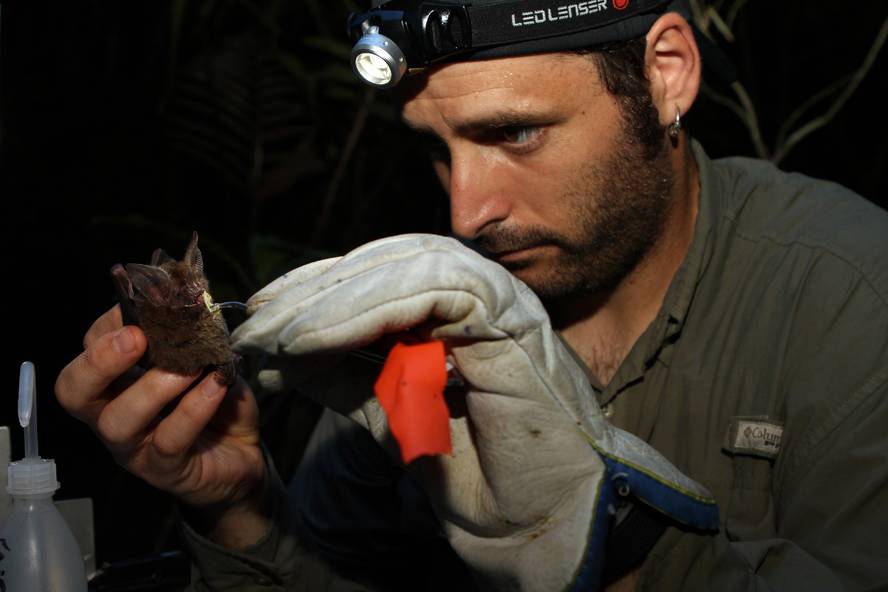"Bats are animals close to primates and that closeness generates discomfort in the subject of viruses"
Egoitz Salsamendi has traveled a long way from Carranza to Panama. In his thesis he investigated several colonies of bats of the Iberian Peninsula and made a stay at the University of Ulm in Germany, in the group of expert Elizabeth Kalko, one of the great references in the investigation of bats. In that stay he was given the opportunity to work at the time of completing the thesis, which has led Panama to the island of Barro Colorado. He returned to Euskal Herria in June, after four months there, but it is back. It seeks the relationship between the fragmentation of the forest and the diseases of bats.
Because there is the largest headquarters of the Smithsonian Institute and it is one of the most appropriate places in the world to conduct a leading bat research.
In the group of bats, when I have been (in the dry season of the year), we worked eight. One was people. In the monkey research group there were monkey people, another six or seven people. There were also more people working with forest ecology, soil microorganisms, ants, bees, wasps, etc. In total we would be between 50 and 60 researchers. And there are also people who keep the headquarters going.
As Big Brother. But every day boats leave the island, for example, to the city of Panama. If you organize well, you can rest for a few days.
Barro Colorado is a large island within the Panama Canal, a protected area, a rainforest of tropical rain. It belongs to the National Park of Sovereignty. The area has been declared a Natural Monument: The island of Barro Colorado, other small islands of the area and some of the peninsula of the canal.
Formerly it was a continuous forest, but the man has made great clareos and over time have remained pieces of forest surrounded by fields and cities. For some species of bats, forest specialists, it is very difficult to move from one side to another. Barro Colorado is a good place to investigate this fragmentation: one hundred years ago the canal was created, a reservoir was built and the water level rose, which led to several islands and the isolation of several peninsula. They are pieces of different sizes.
The main objective is to know the influence of habitat fragmentation on bat diseases, in this case the forest. Bats, like all other beings, have their own diseases and habitat conditions are factors that influence them. The quality of the habitat influences, for example, the quantity of food and the health of the bat. It is reflected in the prevalence of diseases.

It is one of the "hot spots" in the bat research at this time, as the English say, a hot-spot. Bats are deposits of diseases that affect the human being, such as the Ebola virus in Africa. This study relates ecology to medicine. It is an interdisciplinary research, and that is what makes it sophisticated.
The order of the bat, in the taxonomic classification, because they are the closest ancestors of the primates (or ours). That is, the Chiroptera order of the bat is the group of mammals closest to the primate. This closeness generates some discomfort around the viruses, since its taxonomic proximity facilitates the contamination of them.
Yes. I deal with viruses, study the viruses that are in the stool with molecular techniques and work with virologists. It is a collaborative work with a girl who is carrying out the thesis, Veronica Cottonail, who takes care of the parasites of the skin and blood, especially of the tripanosomas (nematode that produces Chagas disease). And the nematodes that have the bats are very similar to those that cause Chagas disease in humans. That is why there is fear that the jump will occur.
Yes, virologists tell us that the most interesting thing would be to collect brains, for example. But we want to leave the animal alive.
So it is. Now I go to Panama to look for more samples and then I have to do a data analysis here.






